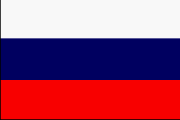





As of 1996 it was reported that at least two next-generation strategic cruise missiles were under development. By late 2000 very few details had emerged concerning either program, neither of which appeared to have received Western designations. It is reported that Russian Air Force plans call for upgrading the Tu-95MS `Bear-H' bomber to carry up to eight Kh-101 or 14 Kh-65 cruise missiles. The status of a plan for the Tu-160 to carry 12 Kh-101s or Kh-65s is unclear, and may have been cancelled.
The long-range Kh 101 cruise missile is under development for long-range aviation. It was apparebtly first launched in October of 1998 by Tu-160 during 37th Air Army exercises. It will reportedly be employed with either a nuclear or a conventional warhead. The conventional warhead version required the use of a highly accurate guidance system, which reportedly provides a circular error probable of 12-20 meters. An electro-optic flight path correction system uses a terrain map stored in its onboard computer, as well as a TV-seeker for the terminal stage of flight. The Kh-101's launch weight is 2,200-2,400kg and its maximum speed is Mach 0.77. The range of this system probably exceeds 3,000km, and some reports claim a range of as great as 5000 km.
Russian President Boris Yeltsin announced in January 1992 that he would end the manufacture of all sea- and air- launched cruise missiles. In March 2000 it was reported that the Russian Air Force had tested a new cruise missile with a conventional warhead. It was said to be a Kh-555 missile, which was developed from the Kh-55, with a range of 2000 - 3000 km. The relationship between the "Kh-555" and the Kh-101, with evidently similar characteristics, is unclear.
The Kh-65, also known as the Kh-SD, is reportedly a smaller version of the Kh-101. It is said to be shorter and lighter [by some 600-800kg], with a much shorter range of only several hundred kilometres. It probably uses the same homing system as the Kh-101, but may a Kh-65S anti-ship version may have an active radar seeker. The fact of the existence of this program was first disclosed in data sheets released at the 1992 Moscow Air Show, at which time it appeared to be a tactical derivative of the Kh-55 Granat [AS-15 Kent] strategic cruise missile. More recently, it is described as the short range tactical version of the Kh-101.
Based on the reported association between the Kh-55 and the Kh-65, it is probably the case that the Kh-101 is a derivative of the previous Kh-55.
Specifications | ||
| Contractor | ||
| Designation | Kh-101 | Kh-65 / Kh-SD |
| Year | ||
| Type | ground attack standoff cruise missile | |
| Wingspan | ||
| Length | ||
| Diameter | ||
| Launch weight | 2,200-2,400kg | 1,400-1,800kg |
| Max. speed | Mach 0.75 | Mach 0.75 |
| Ceiling | ||
| Maximum range | 3,000-5,000 km | ? 300-500 km |
| Propulsion | solid booster + cruise turbofan | |
| Guidance | TERCOM + TV Seeker | |
| Warhead | impact- and direct impact-fuzed high explosive, 1000 kg | |
| Service | ||
